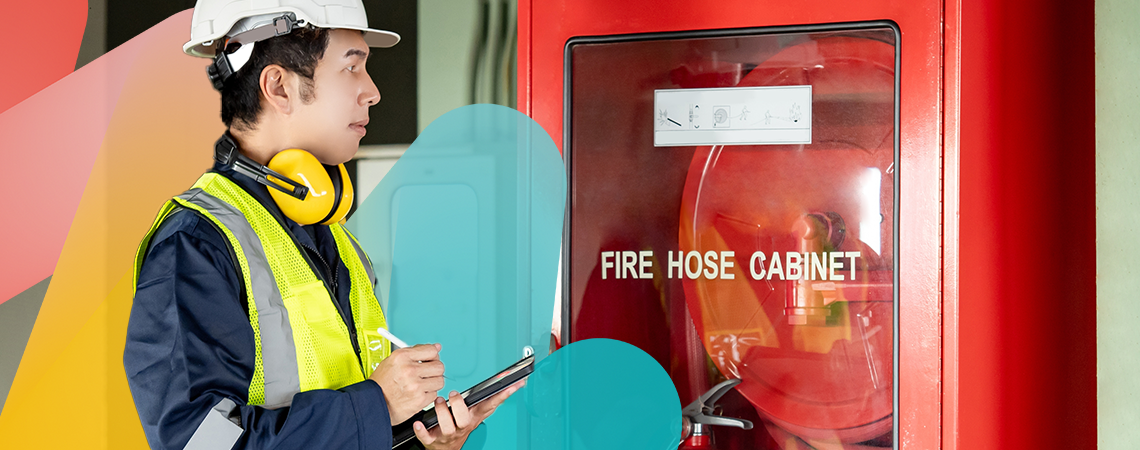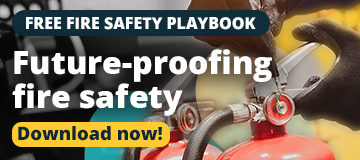
Raising the bar on Fire Safety compliance
Understanding BAFE SP203 and BS 5839 in a Digital World
Fire safety standards in the UK are evolving, not in principle, but in precision. The latest updates to BS 5839-1:2025 and the continued focus on BAFE SP203 are raising expectations for accountability, evidence, and traceability across every stage of a system’s life.
Compliance is no longer about passing an audit. It is about proving competence, maintaining complete records, and demonstrating a continuous chain of assurance from design to maintenance.
The introduction of the golden thread and BS 8644-1 reinforces this direction, requiring information that remains accurate, auditable, and accessible long after the job is done. And as BSI Flex 8670 evolves into BS 8670-1:2024, digital competence is becoming a key part of professional competence.
Technology is not replacing standards. It is reinforcing them. When data flows clearly, compliance becomes more than a record of work completed. It becomes proof of a job done right.
The real-world compliance gap
Everyone knows the standards. The real challenge is meeting them consistently while keeping operations efficient and transparent.
We see it far too often. The work meets the technical requirements, but the evidence does not.
Ask yourself:
- Are your engineers still completing paper forms on site?
- Is job evidence spread across multiple systems or folders?
- Do clients wait for certificates or reports?
- Are you chasing missing signatures or checking who did what and when?
Even when the job is carried out perfectly, proving it afterwards can still be a struggle. And that gap between doing and demonstrating creates risk.
In an industry where traceability matters as much as the installation itself, relying on fragmented systems is no longer sustainable.
Digital processes close this gap by capturing information at the point of work and linking it directly to the job, the asset, and the standard it supports.
Compliance today is not about remembering what happened last month. It is about proving, without doubt, what happened today.
What BAFE SP203 and BS 5839 mean in practice
BAFE SP203-1 and BS 5839 remain two of the most important frameworks in UK fire safety. Together, they define what good looks like and how to prove it.
BAFE SP203-1 certifies competence across four key stages of a fire detection system: design, installation, commissioning, and maintenance. It ensures that qualified professionals are accountable for every step.
BS 5839-1:2025, the updated British Standard for fire detection and alarm systems, strengthens that foundation. It places greater focus on accurate maintenance records, traceable evidence and demonstrable competence.
For contractors, compliance with both frameworks is often essential for accreditation, insurance, and client trust. The real challenge lies in turning compliance from a one-time task into a continuous record of proof.
Digital systems make this practical. When evidence is captured at the point of work, linked to the relevant asset and stored against the correct standard or clause, compliance becomes built in, not bolted on.
Modern technology does not replace these standards. It helps you meet them every day with less admin and stronger proof.
How digital systems close the compliance gap
Compliance can, and should, become a built-in step of every job.
When processes are digital, every check, update, and signature becomes part of the live workflow, not an afterthought. Engineers capture the evidence as they work, linking it directly to the asset, job, and relevant standard. That record is instantly available to office teams, clients, and auditors, creating a continuous chain of proof.
Digital systems remove the gap between doing the work and proving it was done. Reports, certificates, and service histories are generated automatically from verified data, not recreated from memory or paperwork later.
A single connected workflow supports:
- Maintaining full asset lineage and service history
- Providing clear visibility of who attended, when, and what was done
- Aligning records with BAFE SP203-1 and BS 5839-1:2025
- Supporting traceable evidence for the golden thread of building safety
- Enabling faster audit readiness with less manual intervention
When evidence is captured once and shared instantly, compliance becomes a natural outcome of good work, not a separate process to chase.
Why it matters
Every standard, inspection, and certificate exists for one reason: to keep people safe. Compliance may be complex, but safety is the shared goal across the fire safety community.
When information flows clearly, safety improves. Real-time data helps teams spot risks earlier, resolve issues faster, and maintain confidence that nothing has been missed.
The evolution of BSI Flex 8670 into BS 8670-1:2024 makes this clear: digital competence is now part of professional competence. The ability to record, share, and evidence work accurately defines modern, accountable fire safety practice.
For clients, transparency builds trust. For contractors, it strengthens reputation. For the industry, it raises the standard that protects people and property.
Compliance is not about passing an audit. It is about delivering safer outcomes, every day, through connected systems, capable people, and clear information.

Book a demo today!
Speak to our product experts to see how the Joblogic features adapt to fit your business and workflows
*No hard sell, no commitment


.png)